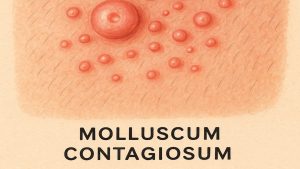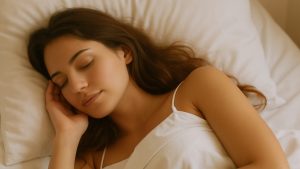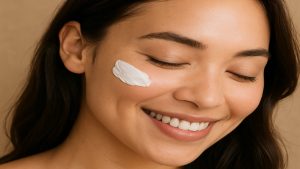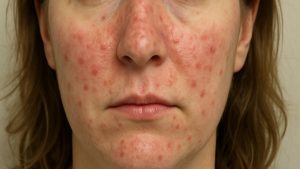- Tanning beds increase melanoma risk by 75%
- UV exposure accelerates skin ageing and wrinkles
- Eyes and immunity are harmed by UV rays
- Spray tans offer a safe, UV-free option
- Prescription skincare may support damaged skin
Tanning beds remain a popular method for achieving a bronzed appearance without relying on outdoor sunlight. However, these devices expose the skin to concentrated ultraviolet (UV) radiation, increasing the risk of premature ageing and skin cancer.
This article explains how tanning beds work, their associated health risks, and the safer, UV-free alternatives available for achieving a natural glow.
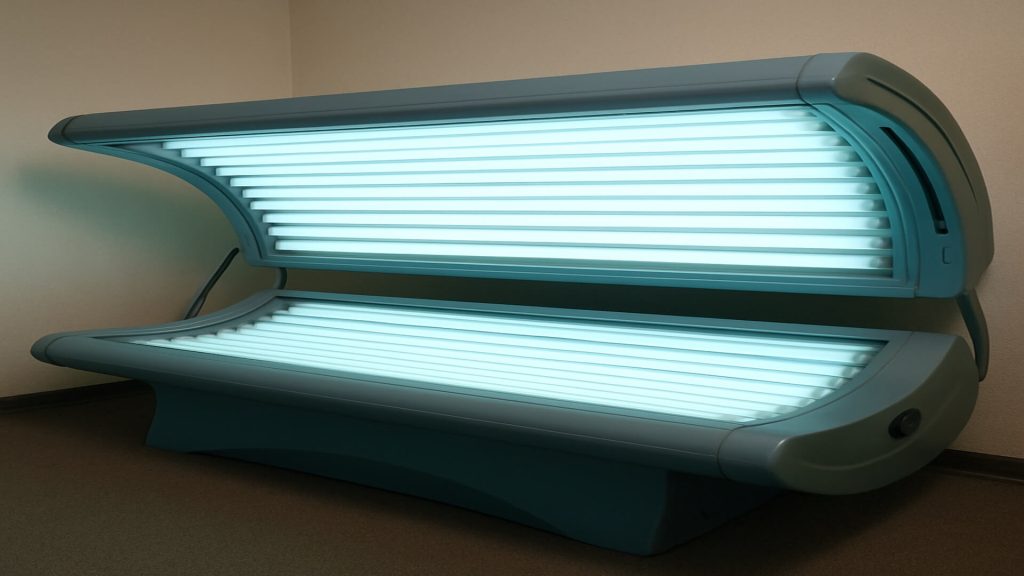
How Tanning Beds Function
Tanning beds use fluorescent lamps that emit ultraviolet light, primarily UVA, to stimulate melanin production and create the appearance of tanned skin [1]. These lamps expose nearly the entire body to radiation several times stronger than midday sunlight, delivering uniform but highly damaging UV exposure [6].
High-intensity UV radiation disrupts DNA repair, accelerates photoageing, and increases melanoma risk, even with short or infrequent sessions [2].
Understanding UV Light
Ultraviolet light falls between visible light and X-rays in wavelength and is divided into three main types:
UVA
Penetrates deeply into the dermis, producing a tan while damaging collagen and DNA. It is the dominant emission from tanning beds [1,6].
UVB
Acts mainly on the surface of the skin, causing sunburn and contributing to vitamin D synthesis. It is present in small amounts in tanning beds [4].
UVC
Completely absorbed by the ozone layer and absent from natural sunlight and tanning equipment.
The predominance of UVA exposure in tanning salons creates long-term damage without visible burning, falsely suggesting safety [6].
Health Risks Of Tanning Beds
Tanning bed use is strongly associated with premature ageing, skin cancer, and eye damage. The International Agency for Research on Cancer classifies tanning beds as Group 1 carcinogens, the same category as tobacco and asbestos [1,6].
Skin Cancers
Using tanning beds before age 35 increases melanoma risk by 75% [1,2]. Researchers estimate that approximately 6% of melanoma cases in the UK result from tanning bed exposure [2].
Even a few sessions can overwhelm DNA repair, leading to abnormal cell growth. Basal and squamous cell carcinomas, though less severe than melanoma, are also linked to regular use [2].
Premature Ageing
UVA light accelerates the breakdown of collagen and elastin in the skin. This results in wrinkles, loss of firmness, and uneven pigmentation appearing years earlier than expected [1,6].
Pseudoporphyria
Excessive UV exposure may trigger pseudoporphyria, a condition marked by skin fragility, blistering, and scarring [3]. These effects can persist after stopping tanning bed use, highlighting the long-term risks.
Eye Damage
Without protective eyewear, intense UV radiation can cause cataracts, retinal damage, and macular degeneration. Over time, this leads to impaired vision and eye discomfort [1,6].
Immune Suppression
Frequent UV exposure weakens the skin’s immune defence, making it more susceptible to infections and inflammatory conditions [1].
| Risk | Summary |
|---|---|
| Skin cancers | 75% increased melanoma risk with early use [1,2,5] |
| Premature ageing | Collagen breakdown causes wrinkles and age spots [1,6] |
| Pseudoporphyria | UV-induced blistering and scarring [3] |
| Eye damage | Cataracts and retinal harm from UV exposure [1,6] |
| Immune suppression | Reduced defence against infection [1] |
Table 1: Key risks associated with tanning bed use
Vitamin D & Tanning Beds
Claims that tanning beds boost vitamin D are misleading. Tanning lamps emit minimal UVB, the wavelength required for vitamin D production [4,5].
The NHS recommends obtaining vitamin D from foods such as oily fish, fortified dairy, or supplements, which are safe and effective [4,5].
The potential for melanoma far outweighs any supposed vitamin D benefit.
Addressing Skin Damage From Tanning Beds
Tanning bed use can lead to hyperpigmentation, dryness, and early signs of ageing. Managing these effects involves protective care and professional evaluation.
Key recovery steps:
- Cool the skin: Use cold compresses or cool showers for relief.
- Moisturise: Apply fragrance-free or aloe-based creams to hydrate.
- Hydrate internally: Maintain adequate water intake for recovery.
- Avoid further UV exposure: Protect the skin and discontinue tanning.
Clinical treatments such as light therapy, prescribed under medical supervision, differ entirely from UV tanning and may aid skin repair in specific cases [4].
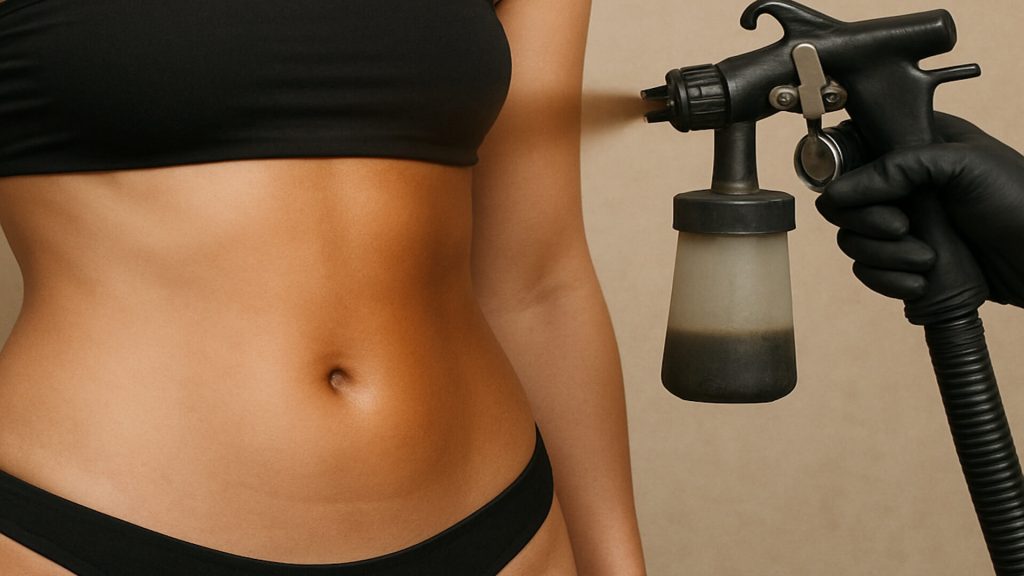
Safer Tanning Alternatives
Modern alternatives achieve a golden tone without UV exposure:
Spray Tan Booths
These use dihydroxyacetone (DHA), a sugar-derived compound that reacts with the skin’s surface to create a temporary tan. The process is UV-free and fully customisable.
Self-Tanning Lotions
DHA-based lotions and mousses develop colour gradually, allowing control over depth and tone without radiation exposure.
Controlled Sunlight Exposure
For those preferring natural tanning, brief outdoor exposure (10–15 minutes) with broad-spectrum SPF 30+ sunscreen minimises harm while maintaining protection.
| Method | Description | Duration | UV Exposure |
|---|---|---|---|
| Spray tan | DHA reacts with outer skin layer | 7–10 days | None |
| Self-tanning lotion | Gradual colour development at home | 5–7 days | None |
| Limited sunlight | Brief daily exposure with SPF protection | Variable | Minimal |
Table 2: Comparison of UV-free tanning options
Monderma: Personalised Skincare Solutions
Monderma provides prescription-strength skincare designed by UK-registered prescribers and dispensed through a GPhC-regulated pharmacy. Treatments may help manage conditions such as hyperpigmentation, acne, or photoageing that develop following UV exposure.
Ingredients such as tretinoin and niacinamide support smoother texture and improved tone under professional guidance. Individuals with significant sun or tanning damage should seek medical advice before starting treatment.
Conclusion
Tanning beds expose the skin to intense UVA radiation that increases melanoma risk, accelerates visible ageing, and causes long-term cellular damage. Their use contributes to a measurable proportion of skin cancer cases in the UK [1,2,3]. Safer, UV-free options such as spray tanning and self-tanning lotions provide the desired glow without risk. Prioritising sun protection, avoiding tanning salons, and following evidence-based skincare can preserve long-term skin health.
To support skin recovery or prevent future UV damage, you can explore Monderma’s tailored consultation service. Share this article to raise awareness about safer alternatives to tanning.
Content is for informational purposes only. Monderma treatments are prescribed following consultation. Results and timeframes can vary. Use as directed by your prescriber.
Bibliography
- International Agency for Research on Cancer. IARC Strengthens Its Findings on Several Carcinogenic Personal Habits and Household Exposures. IARC Press Release No. 196, 2009.
- Boniol M., Autier P., Boyle P., Gandini S. Cutaneous Melanoma Attributable to Sunbed Use: Systematic Review and Meta-Analysis. BMJ, 2012; 345:e4757.
- Murphy G.M. Sunbed-Induced Pseudoporphyria. British Journal of Dermatology, 1989.
- NHS. Vitamin D. NHS UK, 2024.
- NICE. Vitamin D: Supplement Use in Specific Population Groups. 2017.
- Cancer Research UK. How Do Sunbeds Cause Skin Cancer? 2023.
Find your perfect skincare formula
Takes less than 2 minutes – see what your skin needs
Get Custom Formula